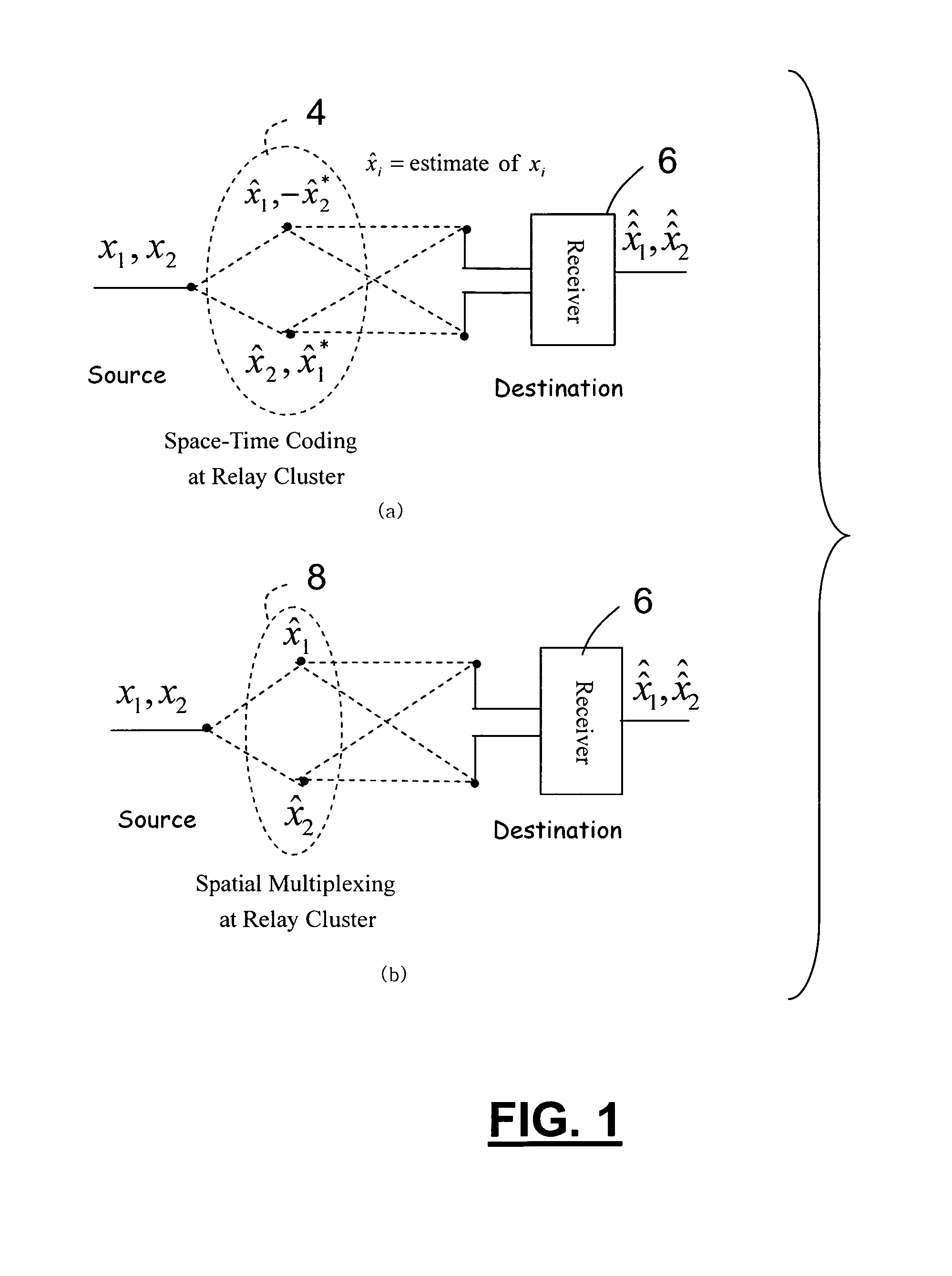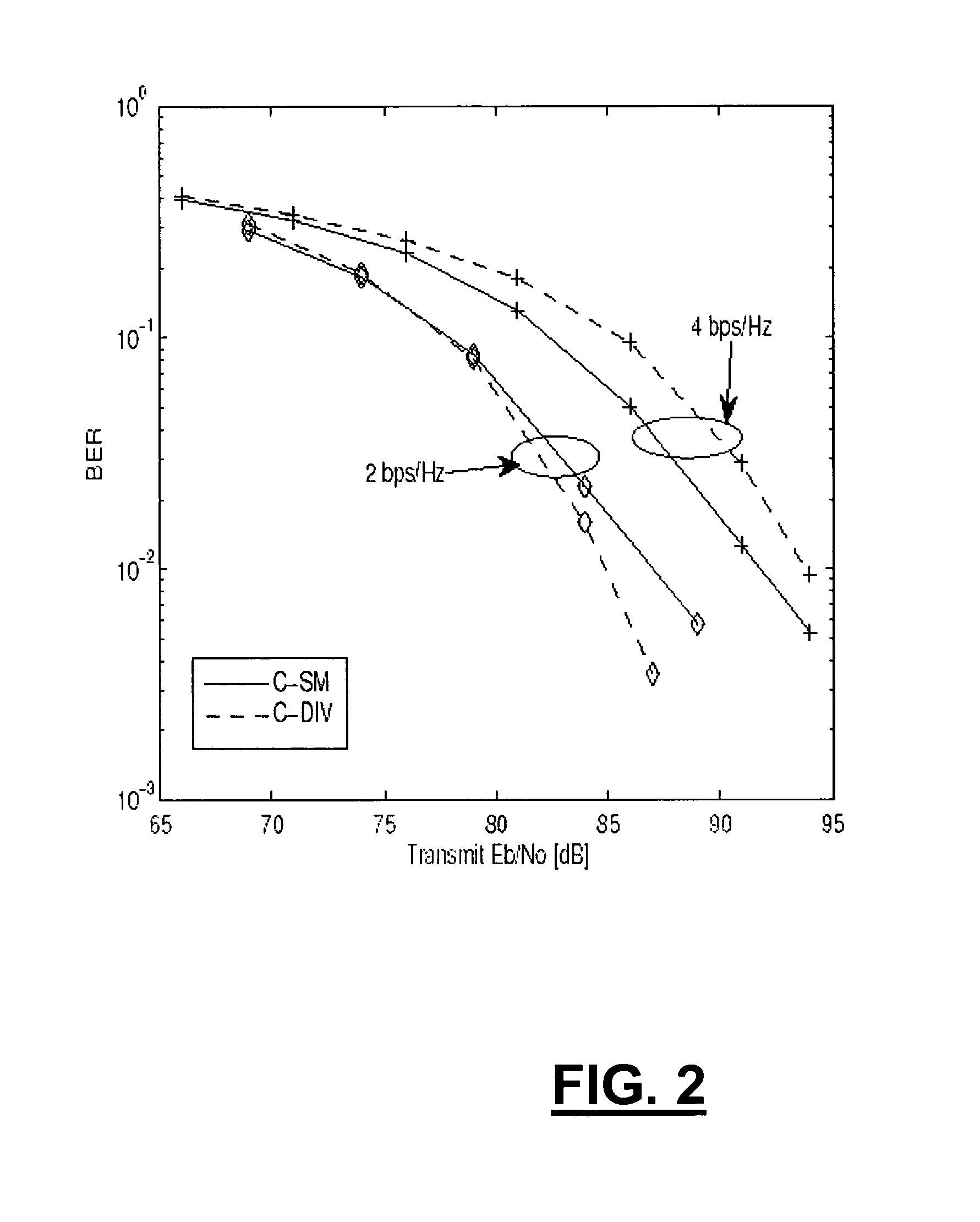Cooperative spatial multiplexing
a spatial multiplexing and co-operative technology, applied in the field of cooperative communications, can solve the problems of high resource consumption, limited and tightly regulated spectrum, and limited energy supply of wireless terminals, and achieve the effect of limited spectrum, energy and spa
- Summary
- Abstract
- Description
- Claims
- Application Information
AI Technical Summary
Benefits of technology
Problems solved by technology
Method used
Image
Examples
Embodiment Construction
[0046]The present invention is now described with respect to exemplary embodiments. The present invention is not to be limited to the specific disclosure provided herein as the present invention contemplates numerous variations as may be appropriate in particular environments or contexts. A first embodiment is discussed with respect to a generalized communications network using cooperative spatial multiplexing. A second embodiment is discussed with respect to a cooperative relaying architecture for wireless video sensor networks.
[0047]The present invention provides for a method and system for cooperative spatial multiplexing scheme. This method provides a form of multiplexing. Generally, multiplexing is the process of mixing multiple signals for transmission through a single channel. Here, the multiplexing is space-division multiplexing or spatial multiplexing. The channel is shared by concentrating individual signals in non-overlapping narrow beams. Spatial multiplexing splits a si...
PUM
 Login to View More
Login to View More Abstract
Description
Claims
Application Information
 Login to View More
Login to View More - R&D
- Intellectual Property
- Life Sciences
- Materials
- Tech Scout
- Unparalleled Data Quality
- Higher Quality Content
- 60% Fewer Hallucinations
Browse by: Latest US Patents, China's latest patents, Technical Efficacy Thesaurus, Application Domain, Technology Topic, Popular Technical Reports.
© 2025 PatSnap. All rights reserved.Legal|Privacy policy|Modern Slavery Act Transparency Statement|Sitemap|About US| Contact US: help@patsnap.com



